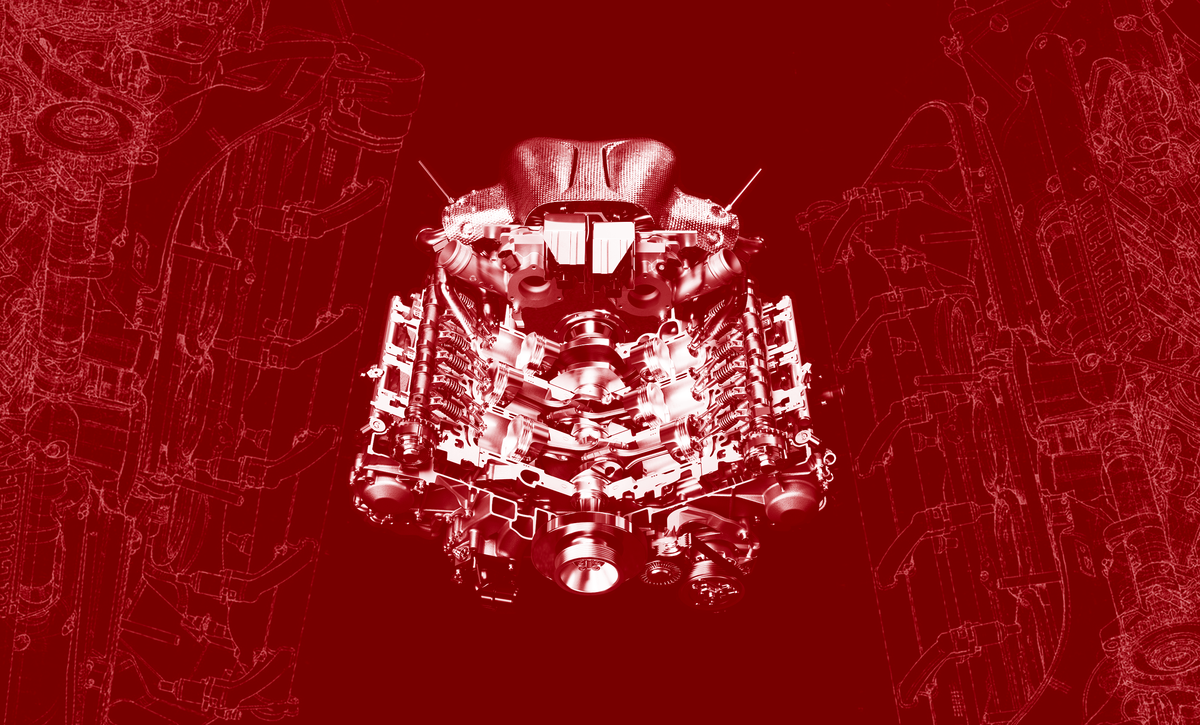The intricacies of Formula 1’s fuel flow systems and how exceptional design has to break some regulations. By Matthew Hoult.
Formula One power units are incredibly complex. The 1.6L turbocharged V6 hybrid engines we see today output over 1000 brake horsepower (bhp) and are solely responsible for carrying an F1 car over 300 km every race. During this time, the Engine Control Unit carries out 43 trillion calculations with temperatures inside the combustion chambers reaching over 2600 ℃ – half as hot as the surface of the sun.
Though F1 power units (PU) are an engineering marvel, they come with extensive regulation to prevent significant performance deficits between rival teams. However, some loopholes can be rather innovatively exploited like the specific placement of the turbocharger, or the spark plug. This led to the development of pre-chamber ignition systems which is now standard technology in modern F1 PUs.
It has since become increasingly rare to see a team with such a significant edge, especially as engine development in F1 has been frozen in preparation for new 2026 engine regulations. However, there is always an exception to every rule. The last time a power unit far outperformed its competitors was in 2019, when Ferrari pushed the boundaries of fuel flow measurement regulations.
Firstly, regulations state the amount of fuel flow rate into the engine is limited to 100 kg/hr. Since 2020, F1 engines now possess two fuel flow meters (FFM) within the fuel tank, one team FFM and one regulated FIA FFM. The reason for having two FFMs is to crack down on teams attempting to bypass the regulations. The sensor provided by the FIA sends encrypted data to the engine ECU which can only be read after the racing session by the FIA themselves, to ensure that fuel does not enter the engine at over 100 kg/hr. This measure was introduced from 2020 onwards in response to allegations that the 2019 Ferrari power unit was operating outside the regulations. Ferrari had a poor season in 2019 by their own standards. But when they came away with two back-to-back wins at the Belgian and Italian Grands Prix, the two most power dependent tracks on the calendar, alarm bells rang throughout the paddock.
There are two ways that the 100 kg/hr limit can be breached. Both sensors are supplied by a company called Sentronics and have a reading frequency of 2.2 kHz, meaning it generates an electrical signal to read the fuel flow rate 2,200 times per second. The data that the FFM outputs is an electronic signal with peaks corresponding to the instantaneous fuel flow every 5,000th of a second. If the peak of the electronic signal exceeds the 100 kg/hr mark then the flow rate is, by regulation, illegally high. In 2019, this data could be manipulated, as the singular flow meter was accessible by both the team and FIA. Since the teams know the frequency of the Sentronics fuel flow sensor, it was possible for their’ engineers to change the offset of the sensor’s readings, to read the flow rate at different times to the pump.
Figure 1 (Craig Scarborough) shows the graphical output of the sensor. For example, if the engineers calibrated their fuel pump to be offset from the 2.2kHz interval, then the FFM would read the electronic blip either slightly before or slightly after the peak of the true value. This means that whilst the sensor reads a ‘true’ value of 100 kg/hr of fuel, the real value would be higher since the sensor is not measuring at the peak. Hence, as more fuel enters the engine the power increases and the manufacturer has an advantage.

A less technical way to achieve higher rates of fuel flow into the engine is to store fuel upstream of the sensor, as opposed to recalibrating the software to bypass it electronically. Since the FFM assembly and its associated wiring is located within the fuel tank itself, the fuel still has to be pumped from the flow sensor to the engine injectors. This means that there has to be some fuel which is stored between the sensor and the high pressure fuel pump (500 Bar).
In 2019, teams were allowed to store up to 2 litres of fuel (2,000cc) between the Sentronics sensor and the injectors, leading to a fuel build up of when there is less demand for fuel from the engine. This extra fuel can then be used by the high pressure pump to feed the injectors when high fuel demand is required. This effectively allows teams to have a supply of 100 kg/hr from the low pressure pump on top of the fuel stored upstream of the sensor. For a visual explanation, Figure 2 loosely shows the schematics of the fuel system on an F1 car. Fuel can only leave the pink-dotted box at a rate of 100 kg/hr, but all of the fuel which is sitting in the black fuel lines (up to 2 litres) can be used at an unregulated rate, giving small amounts of extra fuel beyond regulation when required.

Circling back to Ferrari’s involvement, their custom designed and manufactured PU for the 2019 season seemed to be a cut above the rest. The fastest track (on average speed) of the 2019 season was Ferrari’s home race in Monza, Italy, in which driver Charles Leclerc achieved the fastest speed through the speedtrap (349.7 km/h), simultaneously topping the speed tables for the two following intermediate sections. This top speed was some 18 km/h faster than the slowest competitor. Leclerc went on to win the race from the two Mercedes cars which had long dominated the grid, and having won the previous race in Belgium at Spa-Francorchamps, accusatory fingers began to point at Ferrari and their engines.
Later in the year at the US Grand Prix in Austin, Texas, the FIA gently reminded teams of Articles 5.10.3 and 5.10.5 in the technical regulation handbook, which detail the fuel flow regulations. Suddenly, the Ferrari engines took a significant dip in performance, with leading driver Leclerc finishing 4th and none of the other six Ferrari-powered cars finishing in the top 10. Eventually, a confidential settlement between Ferrari and the FIA was reached which remains a secret to this day, effectively circumventing allegations of cheating. This was followed by a formal change in FFM regulations in 2020, allowing the FIA alone to encrypt the Sentronics sensors and only 250cc of fuel to be stored upstream. This rendered both strategies for bypassing the regulations ineffective.
As long as the details of the settlement are not made public, we will never really know whether the regulations were breached or not. Nevertheless, this case offers an insight into the design philosophy in Formula 1; is real innovation the result of pushing regulatory boundaries, or is it the product of smarter design within the confines of such regulations?
References:
‘43 trillion calculations’, ‘reaching over 2600 ℃’ - Mercedes AMG HPP, ‘Halfway to Impossible’ (https://www.mercedes-amg-hpp.com/formula-1-engine-facts/#)
‘Limited to 100 kg/hr’, (500 Bar) - Racecar Engineering, ‘Optimal Burn’, May 2020 (https://racecar-engineering.telegraph.co.uk/news/racecar-engineering-may-2020-issue-out-now/)
‘Figure 1’‘2.2 kHz’, ‘2,200 times per second’, ‘store up to 2 litres of fuel’ - Craig Scarborough, Motorsport Technology, March 2020 (https://motorsport.tech/formula-1/fuel-flow-gate-did-ferrari-attempt-to-trick-the-system-and-if-so-how-could-it-be-done)
‘Topping the speed tables’ - https://www.fia.com/sites/default/files/2019_14_ita_f1_q0_timing_qualifyingsessionmaximumspeeds_v01.pdf
‘Articles 5.10.3 and 5.10.5’ - https://www.motorsport.com/f1/news/analysis-fia-settlement-ferrari-engine/4703298/





